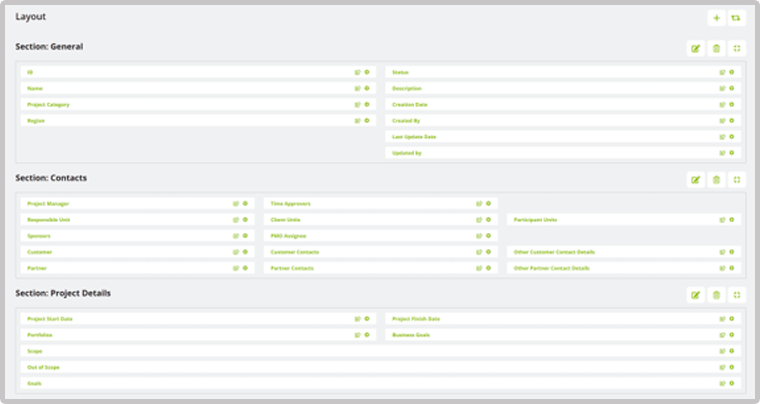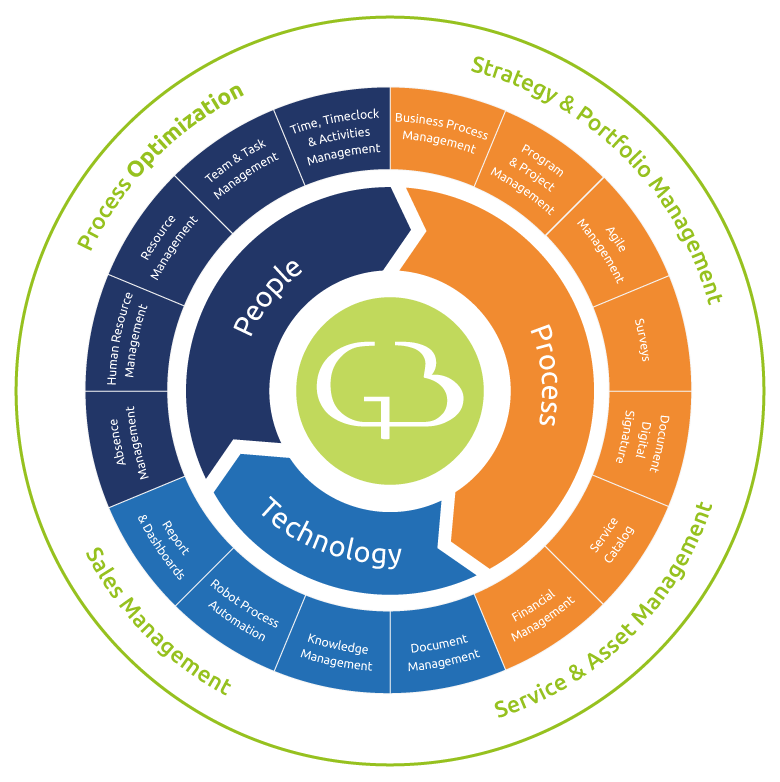
3rd Customer Forum | Governance.Business 2024
May 2, 2024
4th Customer Forum | Governance.Business 2025
November 6, 2025
3rd Customer Forum | Governance.Business 2024
May 2, 2024
4th Customer Forum | Governance.Business 2025
November 6, 2025Business Process Management
What is Business Process Management?
Why is BPM important?
05/ August/ 2025

Managing a business is a very complex challenge. It requires many analyses, strategies, and decisions to achieve the goals and the success. All these steps require a complex vision and understanding of all business steps and needs. Most organizations apply business processes to understand the organization and the business moments. But it is not enough. Companies need a methodology or software to help them. So, how to coordinate, combine, and organize all?
Business process management (BPM) could be a key. CEOs need a method to provide a clear vision and understanding of business complexity to achieve business goals.
Business Process Management (BPM) is a systematic approach to improving an organization's business processes. It involves the analysis, design, implementation, monitoring, and optimization of processes to achieve organizational goals efficiently and effectively. BPM aims to enhance performance by managing business processes systematically.
What is Business Process Management?
Business Process Management is the practice of aligning an organization's processes with its strategic goals, designing and implementing process architectures, establishing process measurement systems that align with organizational objectives, and educating and organizing managers so that they will manage processes effectively. BPM integrates the principles of process improvement methodologies such as Lean, Six Sigma, and Total Quality Management (TQM).
Why is BPM important?
Business Process Management is focused on strategic planning and budgeting. One of the main benefits of BPM is its capacity to simplify, automate, and understand complex processes and high volumes of data. The BPM's capabilities improve a business process by analyzing it, modeling how it works in different scenarios, implementing changes, monitoring the new process, and continuously improving its ability to drive desired business outcomes and results.
Benefits of Business Process Management
BPM software provides multiple benefits for business, and it is critical to improve business performance. It can accelerate digital transformation and speed the innovation of new products and services.
1.Better Customer Satisfaction:
Streamlined processes result in better service delivery, which enhances customer satisfaction. BPM enables organizations to respond more quickly and effectively to customer needs.
2.Cost Reduction:
By identifying inefficiencies and eliminating redundant processes, BPM helps organizations reduce operational costs. This can lead to significant savings over time.
3.Enhanced Transparency and Visibility:
BPM provides better visibility into business processes, making it easier for managers to monitor performance and identify areas for improvement.
4.Improved Compliance and Risk Management:
BPM ensures that business processes comply with industry regulations and standards, thereby reducing the risk of non-compliance and associated penalties.
5.Enhanced Efficiency and Productivity:
By optimizing business processes, BPM helps organizations streamline operations, reduce waste, and improve productivity. This leads to faster completion of tasks and more efficient use of resources.
6.Increased Agility:
BPM allows organizations to be more agile by enabling them to adapt quickly to changing market conditions and customer demands. This flexibility is crucial for staying competitive in a dynamic business environment.
Lifecycle of Business Process Management
A BPM lifecycle is a complete and extensive method with several stages designed to deliver a better performance.
1.Design:
In this phase, business processes are identified, defined, and documented. Analyze the existing process to see what can be improved. Identify the current process and design of the proposed change focusing on standardization and automation. This includes modeling the current (as-is) process and designing the future (to-be) process.
2.Modeling:
This phase involves creating detailed process models using various modeling techniques and tools. Look at how the redesigned business process operates in different scenarios. The goal is to simulate different scenarios to understand how changes will impact the process.

Source: InovaPrime
3.Execution:
The designed processes are implemented using BPM software or other automation tools. Execute improvements, including standardization and process automation. Technology could be a great ally to reduce time, review costs, and be more efficient. This phase may involve integrating processes with existing systems and applications.
4.Monitoring:
Once processes are executed, their performance is continuously monitored using key performance indicators (KPIs). This helps in identifying bottlenecks and areas that need improvement.
5.Optimization:
Based on the insights gained from monitoring, processes are refined and optimized. This may involve making incremental changes or overhauling the process to achieve better performance.
When significant changes are needed, processes may be completely re-engineered. This involves going back to the design phase and starting the cycle anew.
What are the BPM challenges, and how to fix them?
Like other methodologies or business management approaches, Business Process Management has challenges and weaknesses. To avoid how to fix them, we list some best practices in Business Process Management.
1.Involve everyone
BPM requires a shift in corporate culture, and everyone is resistant to changes and new processes. The best way to fix this challenge is to be transparent and create a clear vision for all processes. Ensure that all relevant stakeholders are involved in the BPM initiative. Their input and buy-in are crucial for successful implementation and adoption.
2.Define clear business goals and objectives.
A clear business goals and objectives definition is essential for all processes. Everyone needs to understand and be aligned with business goals and objectives. Creating a complete and clear roadmap could be an important support to achieve your goals.
3.Create a test environment
BPM involves multiple people and departments, with different methodologies and needs. You need to ensure that all the process steps, automation, data, and security are running the right way. It is important to test and avoid breakdowns, errors, security risks, lost information, and other vulnerabilities. Creating a team dedicated to tests, including an IT specialist, could be a relevant decision to have better results.
4.Choose the best technology for your business needs
Today, it is available multiple BPM tools, with different approaches and capabilities. Before selecting the right BPM solution, IT decision-makers need to understand the difference between tool categories and analyze the business needs today and in the future. Technology can significantly enhance efficiency and provide better insights into process performance.
5.Document and communicate processes and updates
People are often finding new ways to work or improve the processes, but they sometimes forget to communicate the changes and the new processes. When the people leave the company or move to another position, and no one knows the new processes it could create an issue on process flow.
6.Design processes including external parties
An organization has internal and external resources and moves a huge amount of data, documents, and confidential information. These huge movements could create issues in the process and difficult the process visibility and traceability. The best way to prevent this situation is to include external parties in the processes from the beginning. It provides a clear vision and defines the right steps in the processes like approval mechanisms, certifications, validations, feedback, and others.
7.Monitor, measure and improve process performance
A BPM implementation is a continuous process like to the business life. Processes, needs, and resources are growing and is necessary to monitor and measure the performance results to find issues and new opportunities to improve results, reduce costs, or optimize the process.
Conclusion
Business Process Management is a critical discipline for organizations aiming to improve their operational efficiency and effectiveness. By adopting BPM, organizations can achieve better alignment of processes with business goals, enhanced productivity, and improved customer satisfaction. The BPM lifecycle and best practices provide a structured approach to managing and optimizing business processes, ensuring long-term success and competitiveness.
How can Governance.Business support your organization with Business Process Management?
FEATURE
Busienss Process Management
![]()


ONE PLATFORM
We invite you to discover Governance.Business!
![]()
It is an end-to-end business management solution. What is it?
Governance.Business is designed to simplify running your organization in a day to day. It provides multiple functionalities that enable you to focus on analyzing, planning, executing, and controlling your business strategy and operations. Click here to discover all the details about our platform or request a demo with our team.




